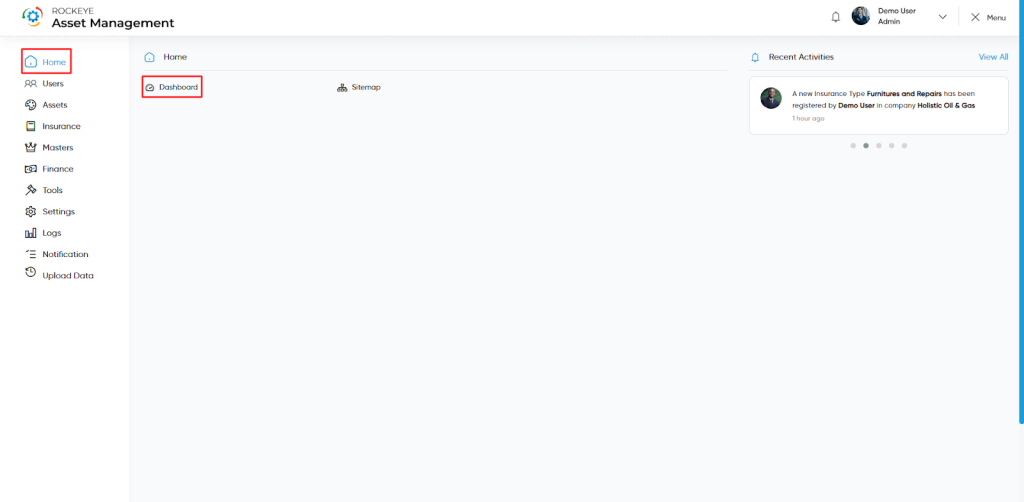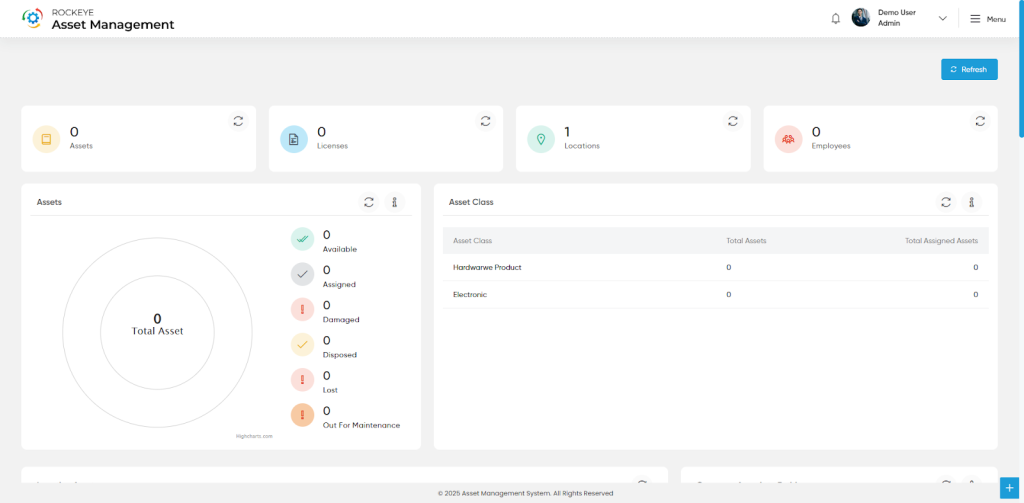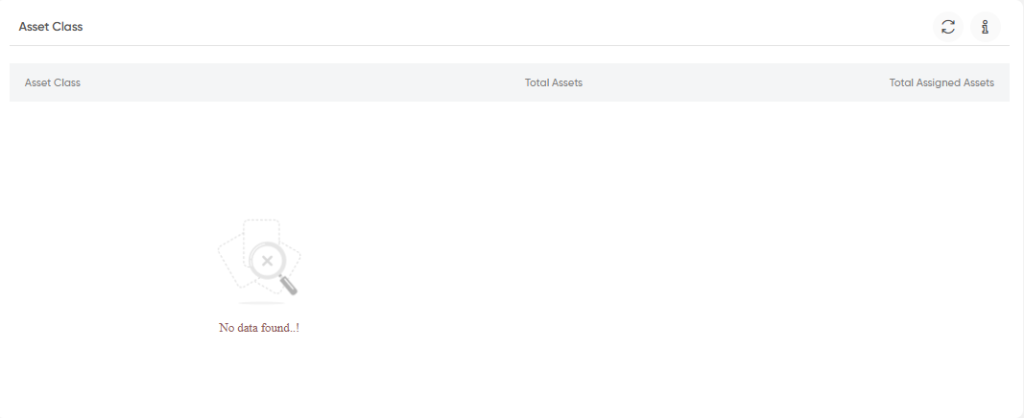Dashbaord
Introduction/Purpose
The Asset Management Dashboard offers a centralized view of your organization’s physical and digital assets. This intuitive dashboard helps you monitor asset status, track assignments, oversee locations, and manage associated licenses and employees. Designed for real-time visibility, it ensures efficient utilization, timely maintenance, and informed decision-making for your asset lifecycle management.
How To Navigate
Path : Home > Dashbaord
Dashboard Record
When user will click on the dashboard button it will redirect you the below page
Assets Widget
- Displays the total number of assets registered in the system.
- Acts as a central figure summarizing all physical and digital assets.
- Clicking on the tile may navigate users to the detailed asset list.
Licenses
- Shows the total number of active software or asset-related licenses.
- Helps in compliance monitoring and renewal tracking.
Locations
- Indicates the number of physical locations (branches, departments, warehouses) where assets are stored or used.
- Crucial for location-based asset assignment and management.
Employees
- Represents the total number of employees in the system.
- These users may be assigned assets and tracked for accountability.
Asset Summary (Donut Chart)

- Graphical representation of asset distribution across statuses:
- Available: Assets ready for use.
- Assigned: Assets currently allocated to employees or departments.
- Damaged: Assets reported as damaged and non-functional.
- Disposed: Assets that are no longer in use and have been disposed of.
- Lost: Assets reported missing.
- Out for Maintenance: Assets undergoing servicing or repair.
Provides a quick glance into the current health and availability of your assets.
Asset Class Table
>>Categorizes assets by class (e.g., IT, Furniture, Vehicles).
Columns include:
- Asset Class: The category or type of asset.
- Total Assets: Total assets under each class.
- Total Assigned Assets: Number of assets from that class currently assigned.
Helpful for analyzing distribution and usage by type.
Location Assets
- Displays assets grouped by location (e.g., branch, warehouse, office).
- Helps in visualizing how many assets are available at each registered site.
- Supports location-based tracking for optimized utilization and accountability.
Data appears once assets are mapped to specific locations in the system.
Company Associate Entities
Summarizes associated third-party entities linked with asset lifecycle:
- Vendor: Number of vendors supplying the assets.
- Manufacturers: Count of original manufacturers of the registered assets.
- Banks: Financial institutions involved in purchase or financing.
- Bank Account: Number of bank accounts associated for payment, leasing, or insurance purposes.
Supports traceability and financial transparency regarding asset procurement and management.
Upcoming License Expiration

Tracks all licenses nearing expiration.
Displays:
License Name
Purchase Date
Expiry Date
Enables proactive renewals and avoids compliance issues or service disruption due to expired licenses.
Crucial for managing software, hardware warranties, and operational licenses.
Maintenance
- Graph view displaying Total Asset Maintenance cost trend over the year.
- Tracks monthly maintenance costs across all assets.
- Allows the organization to analyze patterns, plan preventive maintenance, and control maintenance expenses.
Ensures timely action on assets marked “Out for Maintenance” or those with service contracts.









